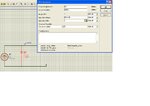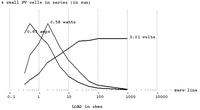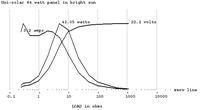h1368
Newbie level 2
hello
this is my first post in this forum.
I have designed an MPPT (maximum power point tracker) in proteus and need Photovoltatic model for test the circuit .
I know PV model consist of diode and current source but i pick those model from proteus's Library and the result of it is not correct for me
the I-V characteristic is like below picture

i found a diode model in proteus that i think , it can help me but don't know how set advanced properties .

this is my first post in this forum.
I have designed an MPPT (maximum power point tracker) in proteus and need Photovoltatic model for test the circuit .
I know PV model consist of diode and current source but i pick those model from proteus's Library and the result of it is not correct for me
the I-V characteristic is like below picture

i found a diode model in proteus that i think , it can help me but don't know how set advanced properties .

Last edited:

